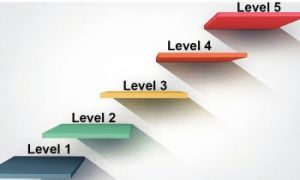Quality Area 4 focuses on Staffing Arrangements in early childhood education settings. It ensures that educators are qualified, experienced, and collaborative, fostering a positive learning environment for children. Here are some key terms associated with this area.
1. Staffing Arrangements
This term refers to the deliberate planning and organization of staff in a childcare setting. It involves ensuring that there are sufficient educators with the right qualifications and skills relative to the number of children present. Effective staffing arrangements guarantee that each child receives adequate supervision, support, and learning opportunities. In practice, this means adhering to prescribed educator-to-child ratios, planning staff rosters to cover all educational program hours, and ensuring that educators’ qualifications match the developmental needs of the children. For example:
- A childcare center ensures proper educator-to-child ratios during both indoor and outdoor play. Educators are strategically placed to supervise children effectively while engaging in meaningful interactions.
2. Continuity of Staff
Continuity of staff emphasizes the importance of stable and consistent educator-child relationships. It involves minimizing frequent staff turnover and using intentional scheduling so that the same educators work with the same group of children over an extended period. This stability supports secure attachments, facilitates individual learning by building on ongoing relationships, and helps children feel safe and understood in their environment. For example:
- A preschool implements a staggered transition plan for new staff, allowing them to shadow experienced educators before taking on full responsibilities. This ensures children feel secure and develop strong relationships with familiar adults.
3. Professional Collaboration
Professional collaboration is the ongoing process of teamwork among educators and often between educators and external professionals or agencies. It means sharing knowledge, strategies, observations, and experiences to enhance educational practices and solve problems collectively. Regular team meetings, shared planning sessions, and collaborative training are examples of how professional collaboration underpins quality practice in early childhood settings. For example:
- Educators participate in weekly team meetings where they discuss strategies for supporting individual children's needs. They share observations and collaborate to plan engaging activities that align with learning goals.
4. Professional Standards
This term outlines the set of industry benchmarks and ethical expectations that educators are required to meet. It covers adherence to national qualifications, continuous professional development requirements, ethical conduct, and compliance with legislative and regulatory frameworks (for example, as set out by ACECQA). Upholding professional standards ensures that educators remain current with best practices and deliver high-quality, safe, and stimulating care and education. For example:
- An early learning center upholds ethical practices by ensuring all staff members complete child protection training. Educators follow confidentiality guidelines when discussing children’s development with families.
5. Positive Work Culture
Positive work culture refers to the overall atmosphere in a childcare setting that supports mutual respect, open communication, shared values, and collaborative problem-solving among staff. A strong work culture fosters job satisfaction, reduces stress, and encourages educators to be innovative and supportive—their positive attitude directly benefiting the children’s experiences. It includes practices such as peer recognition, regular staff feedback, and opportunities for professional and personal growth. For example:
- A childcare center fosters a supportive work environment by celebrating educators' achievements through peer recognition programs. Educators also participate in wellness activities, reinforcing teamwork and morale.
Further Reading
Understanding Quality Areas
Exceeding Theme 1 Across Quality Areas 1 to 7
Documentation Services Require To Support Quality Area 4
How To Achieve Quality Area 4
Reflection Questions For Quality Area 4
Exceeding Guidance For Quality Area 4







 Here is the list of the EYLF Learning Outcomes that you can use as a guide or reference for your documentation and planning. The EYLF
Here is the list of the EYLF Learning Outcomes that you can use as a guide or reference for your documentation and planning. The EYLF The EYLF is a guide which consists of Principles, Practices and 5 main Learning Outcomes along with each of their sub outcomes, based on identity,
The EYLF is a guide which consists of Principles, Practices and 5 main Learning Outcomes along with each of their sub outcomes, based on identity, This is a guide on How to Write a Learning Story. It provides information on What Is A Learning Story, Writing A Learning Story, Sample
This is a guide on How to Write a Learning Story. It provides information on What Is A Learning Story, Writing A Learning Story, Sample One of the most important types of documentation methods that educators needs to be familiar with are “observations”. Observations are crucial for all early childhood
One of the most important types of documentation methods that educators needs to be familiar with are “observations”. Observations are crucial for all early childhood To support children achieve learning outcomes from the EYLF Framework, the following list gives educators examples of how to promote children's learning in each individual
To support children achieve learning outcomes from the EYLF Framework, the following list gives educators examples of how to promote children's learning in each individual Reflective practice is learning from everyday situations and issues and concerns that arise which form part of our daily routine while working in an early
Reflective practice is learning from everyday situations and issues and concerns that arise which form part of our daily routine while working in an early Within Australia, Programming and Planning is reflected and supported by the Early Years Learning Framework. Educators within early childhood settings, use the EYLF to guide
Within Australia, Programming and Planning is reflected and supported by the Early Years Learning Framework. Educators within early childhood settings, use the EYLF to guide When observing children, it's important that we use a range of different observation methods from running records, learning stories to photographs and work samples. Using
When observing children, it's important that we use a range of different observation methods from running records, learning stories to photographs and work samples. Using This is a guide for educators on what to observe under each sub learning outcome from the EYLF Framework, when a child is engaged in
This is a guide for educators on what to observe under each sub learning outcome from the EYLF Framework, when a child is engaged in The Early Years Learning Framework describes the curriculum as “all the interactions, experiences, activities, routines and events, planned and unplanned, that occur in an environment
The Early Years Learning Framework describes the curriculum as “all the interactions, experiences, activities, routines and events, planned and unplanned, that occur in an environment


